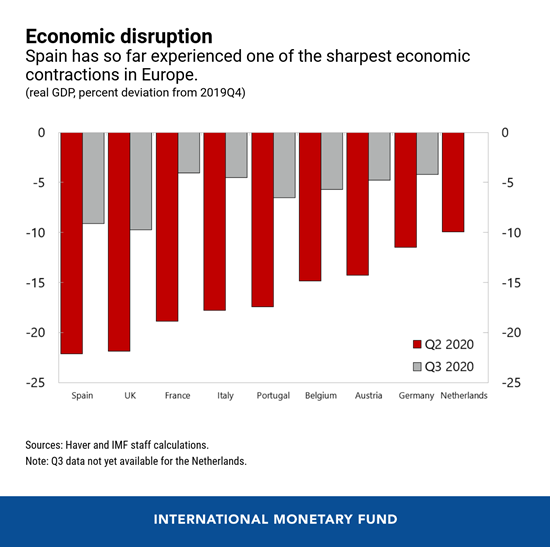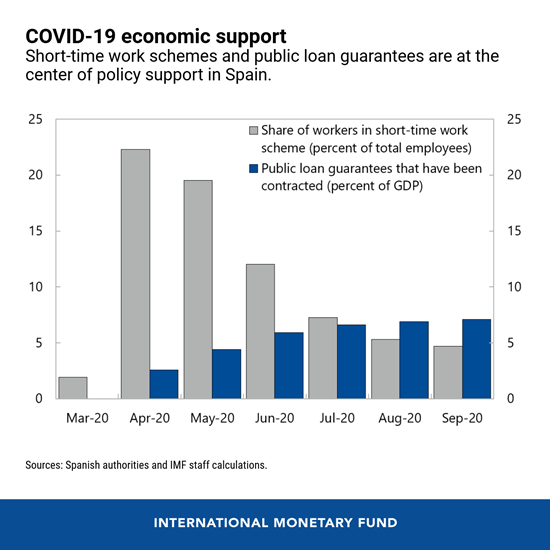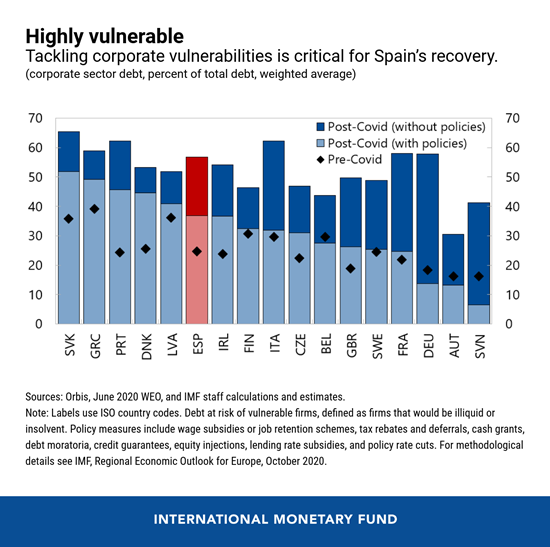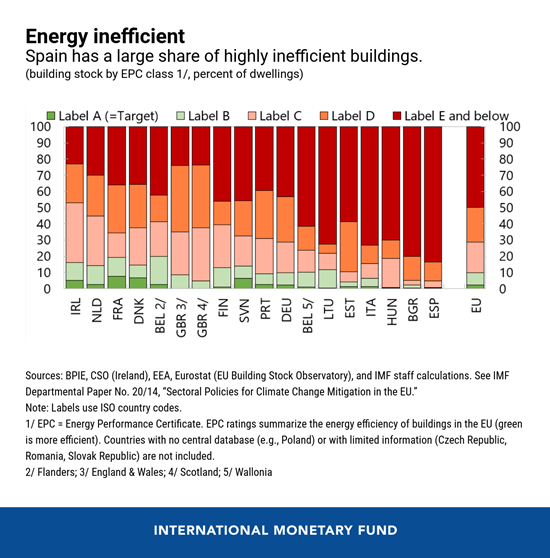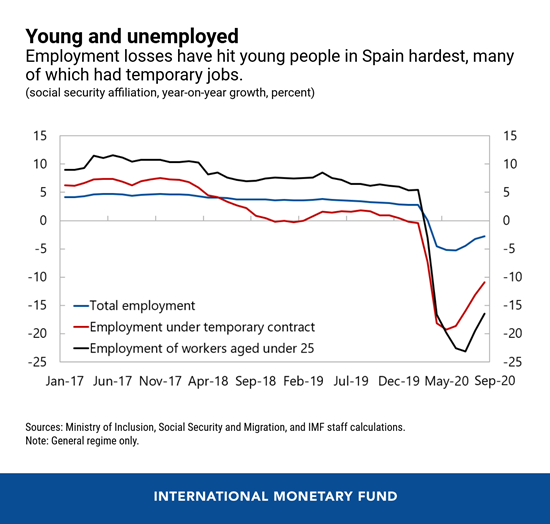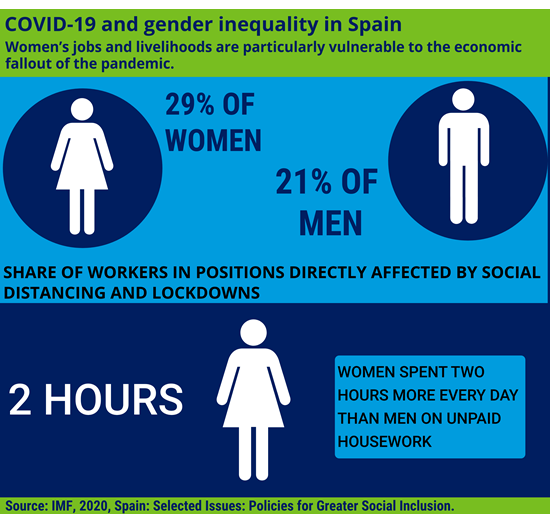
An automobile plant in Barcelona. Spain is one of the hardest hit countries by the pandemic. (photo: Enric Fontcuberta/EFE/Newscom)
Five Charts on Spain’s Economy and Response to COVID-19
November 13, 2020
The pandemic has taken a significant toll on Spain’s people and economy, following five years of strong growth and job creation. A second wave of infections that started in mid-July has put a lid on the recovery.
Related Links
According to the IMF’s latest economic health check of the country, it will take several years for the Spanish economy to recover. And the outlook is subject to strong risks.
Here are six charts on Spain’s economic outlook and the country’s response to the crisis.
- Despite a sharp rebound in the third quarter, the Spanish economy remains 8.7 percent below its level a year ago—one of the largest contractions in Europe. The magnitude of the drop reflects the large-scale spreading of infections, which required strict lockdown measures. Structural features that make the Spanish economy vulnerable to disruptions also played a role. Contact-intensive service sectors like tourism, which accounts for about 12 percent of Spain’s economy, were hit especially hard. Small and medium-sized companies, which typically have fewer financial resources and contribute to over 70 percent of employment, are struggling to stay afloat. The widespread use of temporary employment accounted for most of the job losses.
- The Spanish authorities have provided swift income and liquidity support to limit the fallout of the pandemic. The short-time work scheme benefited about 22 percent of salaried workers at its peak. And public loan guarantees have targeted small businesses. In the near term, flexible and agile fiscal support needs to remain in place. Over time, the measures should become increasingly targeted, with a focus on vulnerable groups and viable firms.
- Addressing corporate sector vulnerabilities is crucial for Spain’s recovery from the COVID-19 crisis. Taking into account the impact of policy measures, the share of debt at risk of vulnerable firms is estimated to rise by 7 percentage points—to about 37 percent—as opposed to rising by 27 percentage points without policy measures. This highlights the critical importance of policy support. Shortcomings in the insolvency frameworks, if not addressed, will weaken the economy’s capacity to deal with a potential wave of insolvencies. A slow restructuring of the economy could dampen firms’ profitability and investment, lowering the country’s potential growth.
- The EU Recovery and Resilience Facility is an exceptional opportunity for Spain. It can provide a demand boost to support the recovery, while closing gaps in green infrastructure and human capital. This will accelerate the transition to a low-carbon economy and strengthen the economy’s long-term potential. Residential housing is an example of a sector that would benefit from labor-intensive, climate-compatible public investment. It accounts for about 16 percent of Spain’s non-EU Emissions Trading System emissions, is difficult to decarbonize, and is one of the most energy inefficient in Europe.
- The pandemic is widening inequalities in the labor market. The job market disruptions among on young, low-skilled, and temporary workers have been especially harsh. Going forward, policies to overcome the overuse of temporary contracts and enhance the employability of dislocated workers through better active labor market policies, such as more targeted vocational training, will be key for greater social inclusion.
- The pandemic is having an especially detrimental effect on women, putting decades of progress in gender equality at risk. Women are particularly vulnerable to the economic fallout of the pandemic. About 29 percent of women in Spain worked in jobs that were hit hardest by social distancing and lockdowns, compared with 21 percent of men. At the beginning of the lockdown, Spanish women worked at least two hours more of unpaid housework every day than men. Boosting family and childcare support and promoting flexible working arrangements are the key priorities for achieving greater gender equality.








